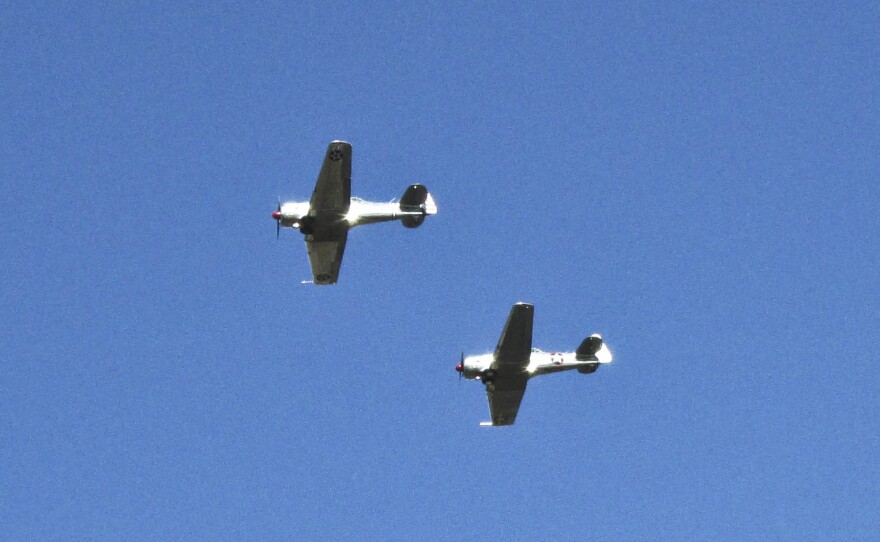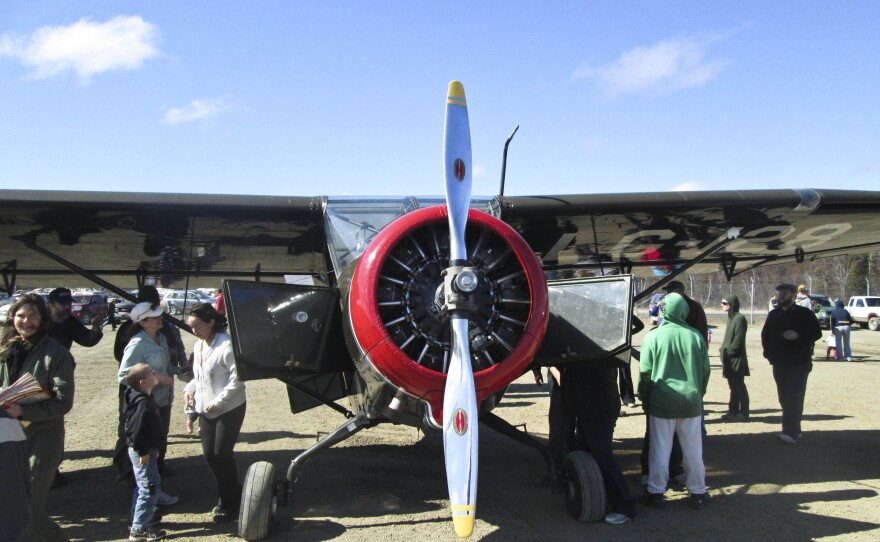July 3rd marks 100 years of aviation in Alaska. To mark the occasion, the Alaska Airshow Association is barnstorming airfields across the state with aircraft from 70 years ago.
With a couple hundred Dillingham residents looking on, two AT-6s flew overhead in tight formation before coming in for landing. The planes rolled off the factory floor in 1943 and still glimmer brightly with a polished aluminum shell. And they don’t just look good, they can still fly fast and tight. 6 feet, wingtip to wingtip. The single engine Advanced Trainer 6 was used to train pilots who would go on to fly the fast fighter aircraft like Mustangs and P-38 lightings. Jeff Siever is with the commemorative Air force and flew in on an AT-6.
"The first step in their flight training would be to fly a basic trainer, like a steerman, then step up to the advanced trainer, the Texan. This would have a lot of the same similar types of system as the fighters, the retractable landing gear, controllable propeller, and flaps. That's why they called these the "pilot maker," because everyone funneled through this make and model to learn how to fly those World War II fighter aircraft."
Chuck Miller flew in on a black Consolidated Vultee- L-13 Dragonfly. Sporting giant fat wings, it’s a unique looking aircraft.
"It's a super slow flight, it cruises at about 90 knots (105 mph). But it will slow down, yesterday in the wind we had it slowed down to 12 kts at 1000 feet. It's a really short take off and landing airplane. It was designed to fly on unimproved runways to pick up injured soldiers, to do missions for search and rescue and pick up satchels. It had a wire pick up system and you could mount cameras on it. It's just a great Alaskan airplane for the kind of flying we do. It's not overly fast, it's not as fast as the other warbirds we fly. It seems to get almost more attention than the other airplanes. It's so ugly it's cute," said Miller.
The dragonfly dates to 1945. After the war it was adapted for use in bush Alaska.
The tour has taken pilots from Cordova across southcentral to the Alaska Peninsula. They’ve talking with people around the state and have had a chance to reflect on 100 years of flight.
"My friend Paul Claus put it well in a presentation he gave a week or two ago. He said Alaska is really the only place left on earth where you can do this kind of flying. We should feel very privileged to still have that opportunity. Other places in the world, you just don't have the freedom to go anywhere you want, fly anywhere you want, land anywhere you want within reason. I think pilots in this state need to realize that and appreciate that we can do what we do here," said Siever.
Chuck Miller says the airshow has brought in big crowds already in its first few weeks.
"It's just amazing the turnout and the interest, to come out and see something different," said Miller. "We're really enjoying ourselves. We hope we see another 100 years."
The planes continue next week to Aniak and on up the coast through Nome, Kotzebue, and Barrow before returning to Fairbanks for the centennial this July.













